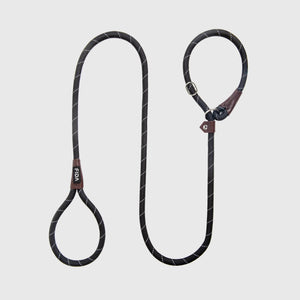Choosing Between Dog Collars and Harnesses: Which is Best for Your Dog?
When it comes to dog ownership, selecting the right tool for walking and training is crucial to your dog’s well-being. Dog collars and harnesses are two common options, each with their own pros and cons. This guide will compare both tools and provide helpful tips on how to choose the right one for your dog.

Pros and Cons of Dog Collars:
Advantages of Dog Collars:
- Strong Control:A collar is placed directly around a dog’s neck, allowing for quick and effective control through the leash. This is particularly useful during the early stages of training or for dogs that need strong restraint.
- Versatile Fit:Collars come in various sizes, making them suitable for dogs of all breeds and sizes.
- Easy to Use:Putting on a collar is simple—just slip it over your dog’s neck and adjust for a secure fit.
Disadvantages of Dog Collars:
- Potential Neck Injury:If the collar is too tight or made from poor-quality material, long-term wear may cause pressure marks or skin issues around the neck. Dogs that tend to pull or lunge during walks may also experience throat damage.
- Hair Issues:For dogs with long fur, collars can cause tangling or matting, affecting both the dog’s appearance and comfort.
- Lower Comfort Level:Compared to harnesses, collars have less surface area in contact with the dog’s body, which can make them less comfortable for long-term wear.

Pros and Cons of Dog Harnesses:
Advantages of Dog Harnesses:
- Better Comfort:Harnesses distribute pressure more evenly across a dog’s chest, reducing the risk of injury and increasing overall comfort, especially during long walks.
- Improved Safety:Unlike collars, harnesses avoid the neck and throat area, reducing the risk of choking or breathing issues for dogs that pull on the leash.
- Ideal for Small or Sensitive Dogs:Harnesses are a better option for smaller breeds, dogs with throat problems, or those that need to wear walking gear for extended periods.
Disadvantages of Dog Harnesses:
- Less Control:While harnesses provide more comfort, they can offer less control over a dog’s behavior compared to collars, making them more suited to well-trained dogs.
- Potential for Escape:Some harness designs may not be secure enough, especially for excited or active dogs that may attempt to slip out.
- Fit Challenges:Although harnesses are available in many sizes, finding the perfect fit for some smaller breeds can be challenging.

How to Choose Between a Collar and a Harness:
When deciding between a collar or a harness, consider the following factors:
- Dog’s Size and Personality:Smaller dogs or those with calm temperaments often do well with harnesses. Larger dogs or those with energetic personalities may require the control of a collar.
- Training Phase:Collars are ideal for dogs in the early stages of training or those that need more control, while harnesses suit dogs with a higher level of obedience.
- Material and Comfort:No matter the choice, ensure the material is durable, safe, and comfortable for your dog. Avoid options that are too tight or loose to prevent injury.
- Special Needs:If your dog has any medical conditions, such as throat issues, or needs to wear a walking tool for long periods, a harness may be the best option. On the other hand, collars are better for dogs that tend to pull or need firm guidance.
Is a Harness Better for My Dog?
Compared to collars, harnesses are generally considered more comfortable and safer for most dogs. Collars may place strain on the neck, which can cause discomfort or breathing difficulties, especially if your dog pulls on the leash. A harness shifts the pressure to the chest, allowing you to control your dog without worrying about injury.
Additionally, because of its 8-shape design, a harness is harder for dogs to escape from, giving you more confidence during walks.
How to Choose the Right Harness:
When shopping for a harness, keep the following in mind:
- Fit:The harness should fit your dog’s chest snugly but not too tight. Make sure to measure your dog’s chest circumference before buying.
- Comfortable Materials:Different breeds may have different preferences for harness materials, so it’s essential to try several options. Avoid harnesses made from rough or uncomfortable materials that may damage your dog’s fur or skin.
- Strength:For dogs that get excited and pull, choose a harness that is strong enough to provide control without snapping or loosening.
- Durability:Since harnesses are used frequently, opt for durable materials that can withstand regular wear. Don’t prioritize aesthetics over quality.
- Well-Crafted:Look for harnesses with smooth stitching, lightweight metal clasps, and high-quality construction to avoid irritation to your dog’s skin.

How to Use a Harness Properly:
- Putting on the Harness:Lay the harness flat on the ground in an 8-shape, and place your dog’s front legs into the two loops. Then, fasten the buckle on the back and attach the leash.
- Fit Check:The harness should be tight enough to stay in place but loose enough to fit two fingers between the harness and your dog’s body. Keep the leash at a reasonable length (no more than 5 feet) to maintain control during walks.
- Safety Tips:Always tighten the leash when crossing roads or entering elevators to prevent accidents. Additionally, train your dog to walk alongside you or slightly behind, rather than pulling ahead.
Both collars and harnesses have their pros and cons, and the best choice depends on your dog’s size, temperament, and training needs. Whichever option you choose, ensure it is safe, comfortable, and suitable for your dog’s specific requirements.

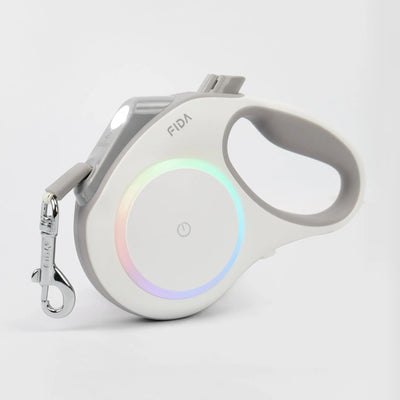
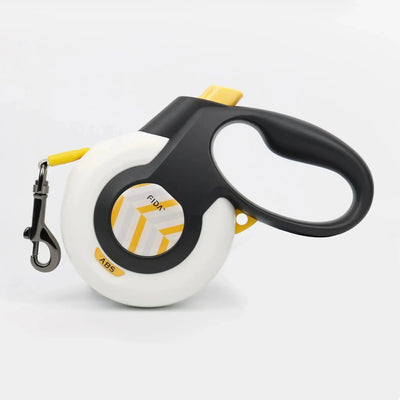
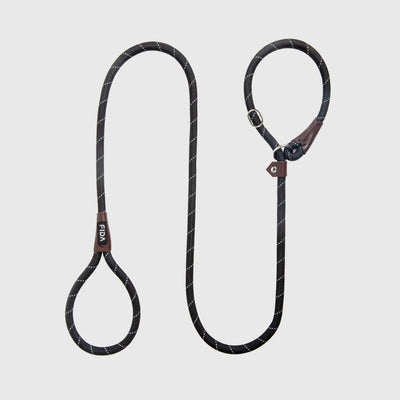
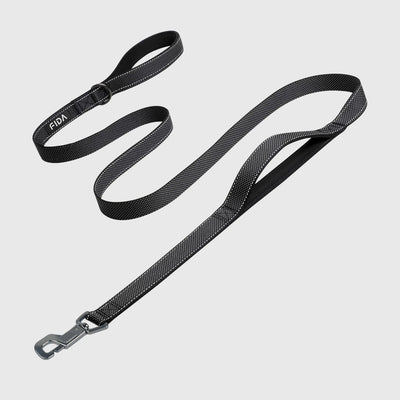
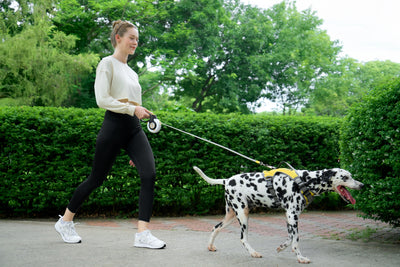
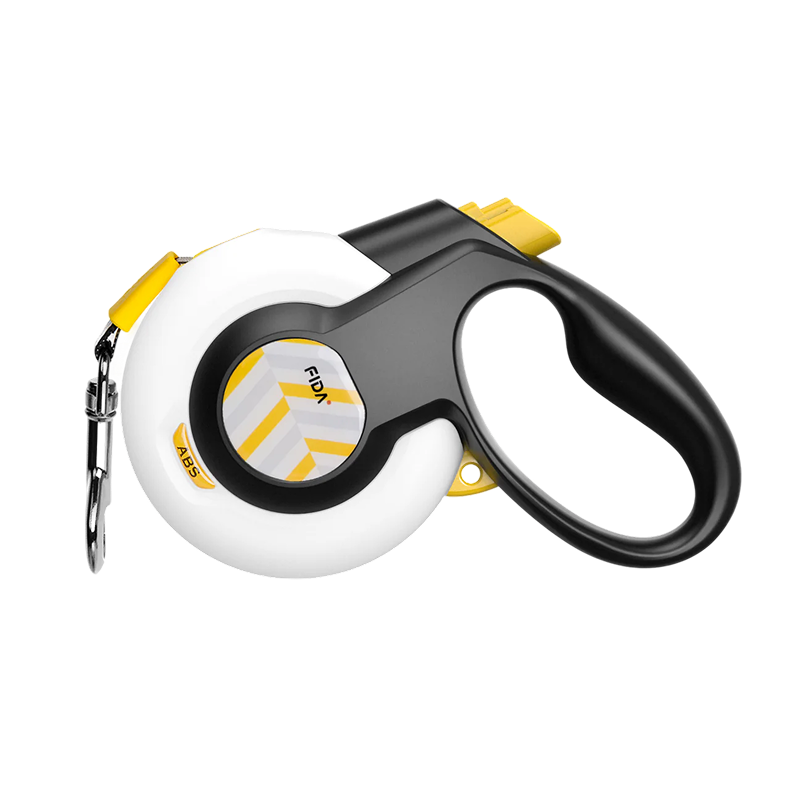 Retractable Leashes
Retractable Leashes

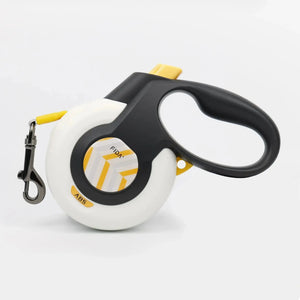
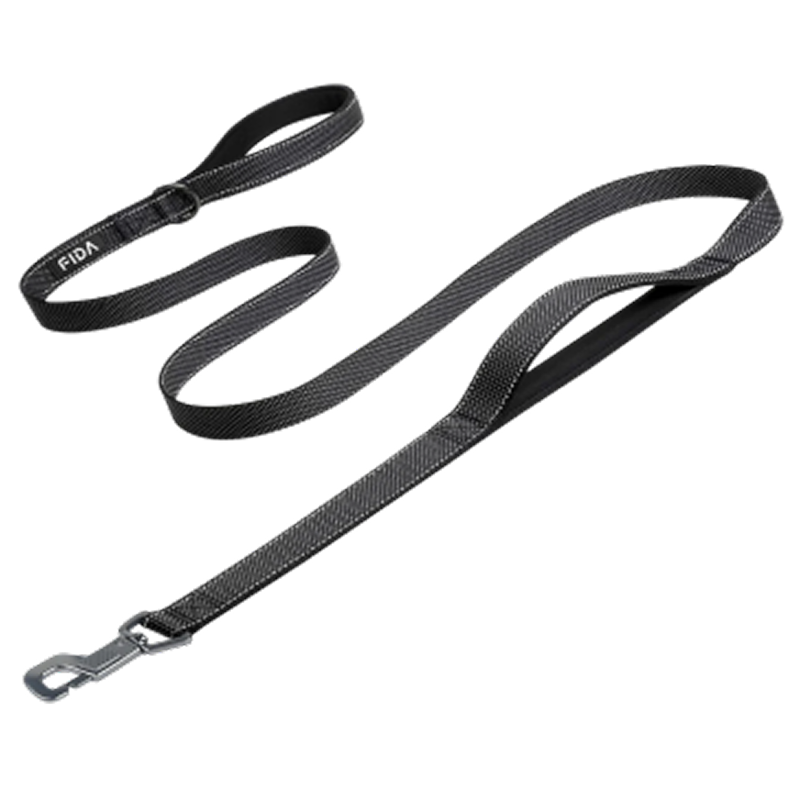 Non-Retractable Leashes
Non-Retractable Leashes
